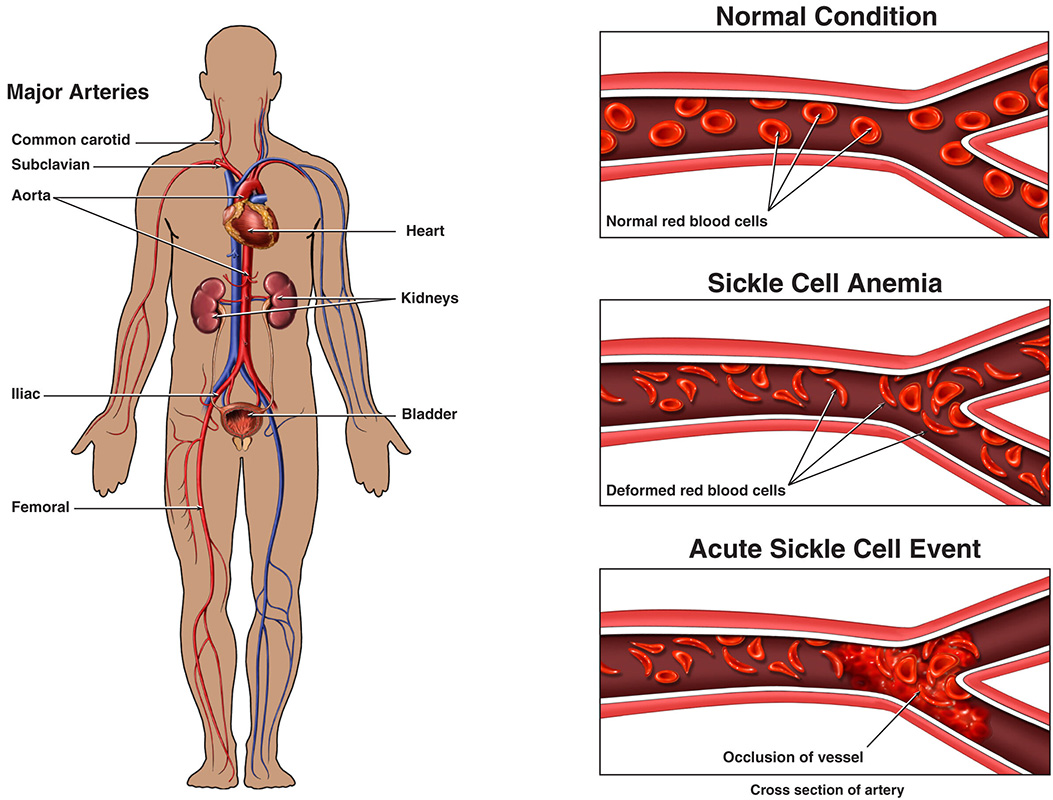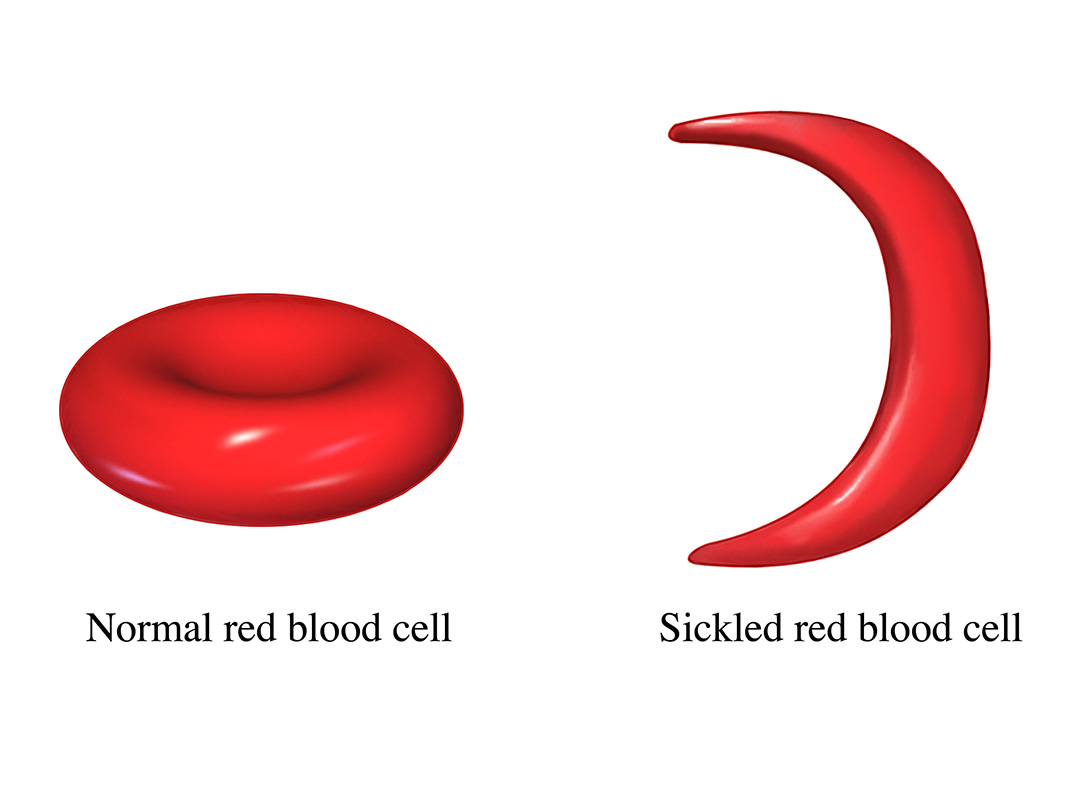Sickle Cell Facts

Sickle cell disease is a hereditary blood disorder which occurs when a patient has abnormal hemoglobin called hemoglobin S.
Hemoglobin is a protein in red blood cells that is needed to carry oxygen throughout the body. Although it is passed through families, not all children born to a parent who carries the sickle cell trait will have the disease.
- African American people are most at risk for sickle cell disease, as 1 out of every 365 African American babies are born with sickle cell disease.
- About 100,000 people in the United States have sickle cell disease.
- Sickle cell disease is also more common in Latinos, and about 1 in 16,300 Hispanic-American babies are born with sickle cell disease.
If you think you may be a carrier of the sickle cell trait, you can have a blood test to confirm. A genetic counselor can help couples worried about passing sickle cell disease and explain the different inheritance patterns.
A child must inherit two sickle cell genes to get sickle cell disease, so even if one parent is a carrier, there is no guarantee that the child will get sickle cell disease. Carrying the sickle cell trait is not a danger to the carrier; very few carries without the disease experience any similar symptoms.

Symptoms of sickle cell disease include swelling of the hands and feet, fatigue, and jaundice. Over time, sickle cell can lead to infections, delayed growth and acute pain crises. The disease can harm the spleen, brain, is, heart, kidney and bones. Currently, the only cure for sickle cell is a bone marrow transplant, which is invasive and dangerous. It is also extremely hard to find a match, so it is impossible for some people to have one.